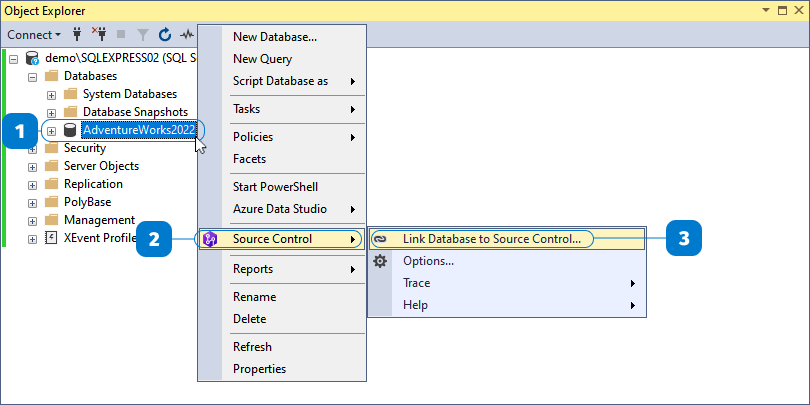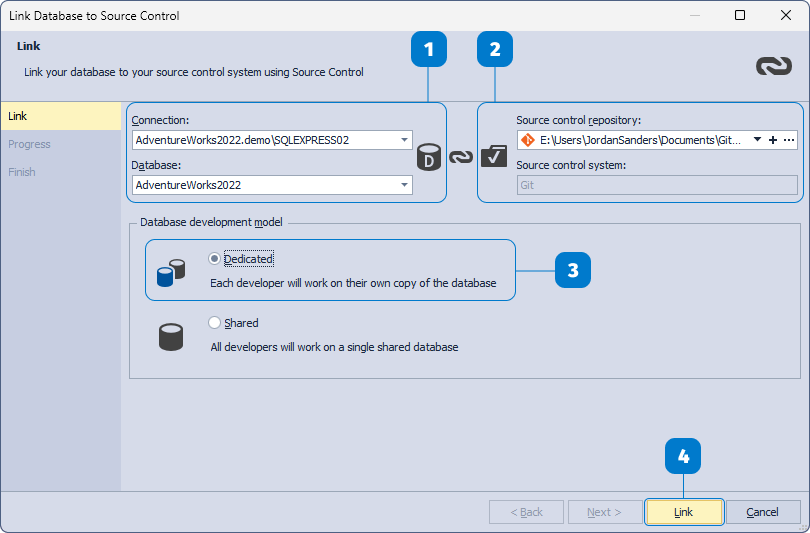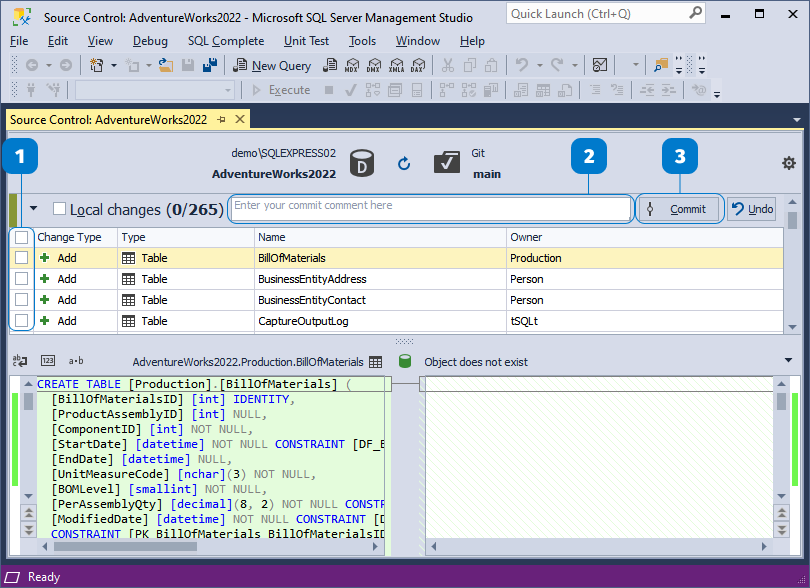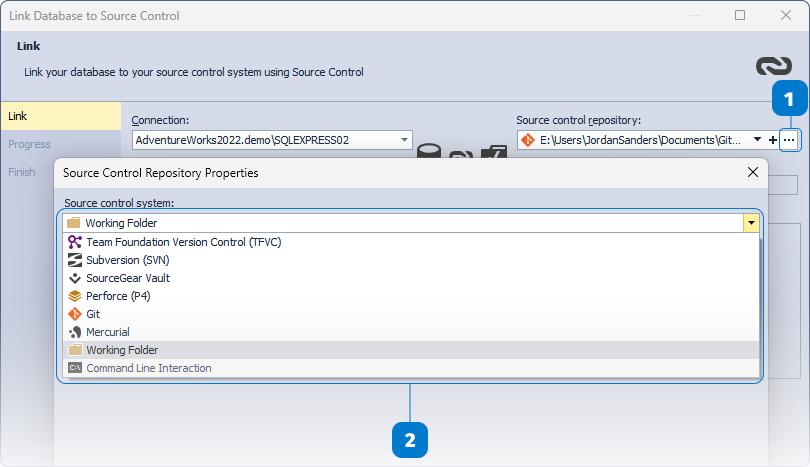How dbForge Source Control is involved in the DevOps process
Although the dbForge Source Control tool is not used in the Continuous Integration process directly, database developers do use version-controlling extensively in their work.
Naturally, a database is a critical part of an application. Thus, if the changes (e.g., the ones related to the delivery of a new app version to customers) do not find their way into the production database, the entire application may end up working improperly. Long story short, version control is crucial for the entire database development lifecycle.
When implementing a new feature or improving the current functionality, a developer normally deploys a local database on their machine and makes changes to the database schema objects, such as adding or modifying tables, columns, stored procedures, etc. The number of such changes may be huge, and all of them are made right in the deployed database. Eventually, the time to save the changes to the database comes.
dbForge Source Control displays all the changes made to the database and provides an option to review them prior to committing. The following example illustrates a case of database deployment from Git and putting it under source control to track changes made during a database schema change.










